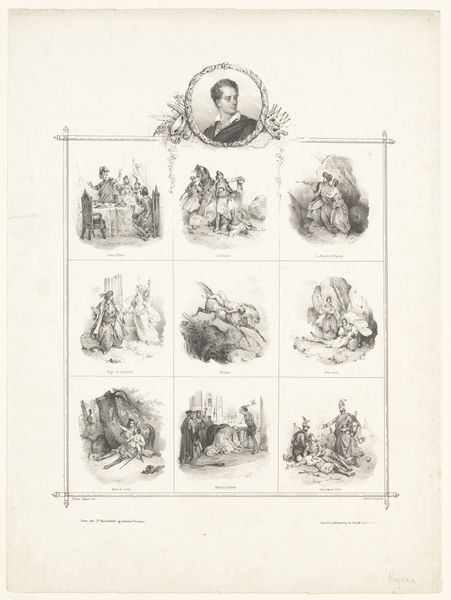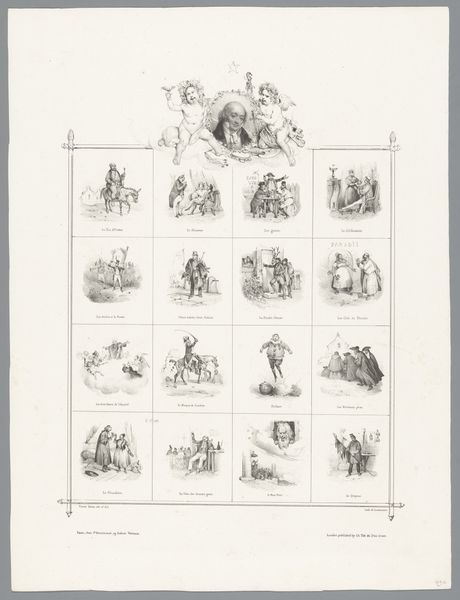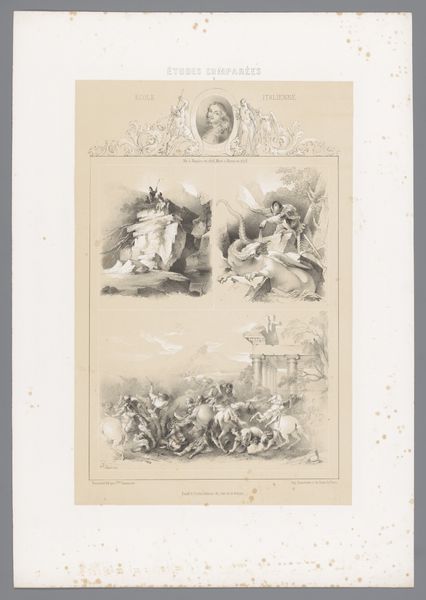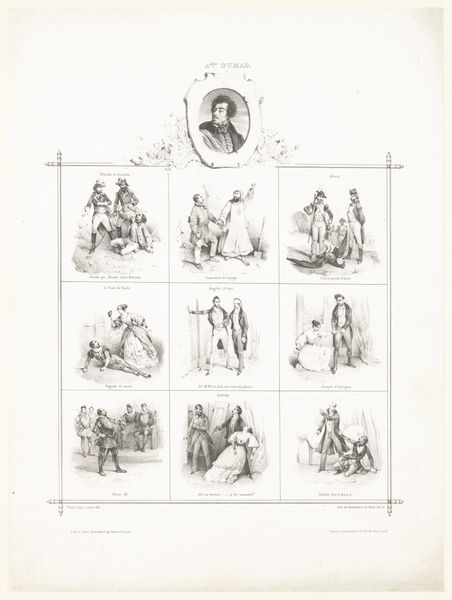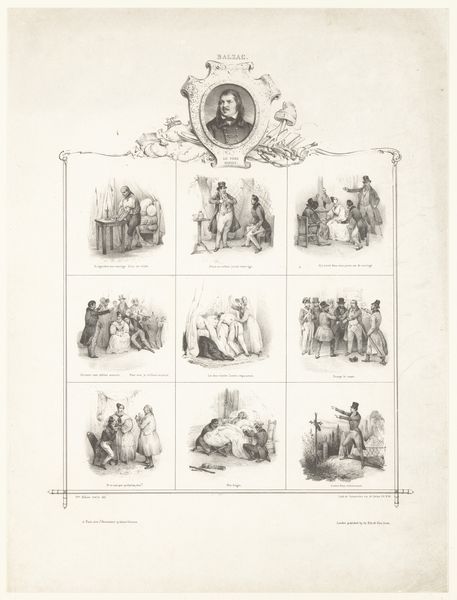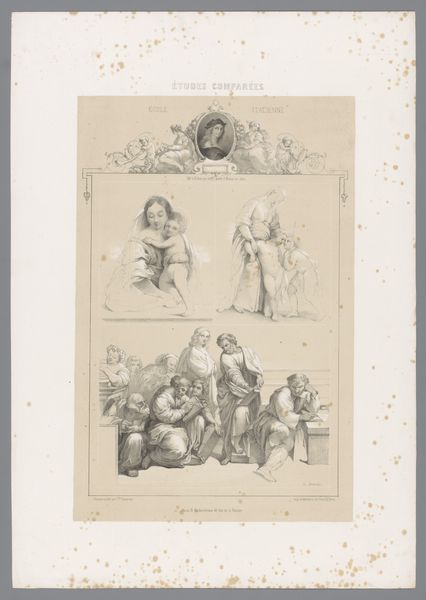
Portret van François-René de Chateaubriand en negen voorstellingen uit zijn roman 'Atala' 1835
0:00
0:00
drawing, print, paper, ink, engraving
#
portrait
#
drawing
#
allegory
#
narrative-art
# print
#
pencil sketch
#
figuration
#
paper
#
ink
#
romanticism
#
line
#
watercolour illustration
#
history-painting
#
engraving
#
watercolor
Dimensions: height 366 mm, width 275 mm
Copyright: Rijks Museum: Open Domain
This print, made by Victor Adam, probably dates from the mid-19th century and presents a portrait of François-René de Chateaubriand, surrounded by scenes from his novel "Atala." As a lithograph, this work originates from a fascinating process. The image was drawn with a greasy crayon onto a flat stone, which was then treated with chemicals so that ink would adhere only to the drawn areas. This printmaking technique allowed for relatively quick and inexpensive reproduction, fitting into the burgeoning print culture of the 19th century. We can see how the artist uses the qualities of the lithographic process to create subtle gradations of tone and intricate details, mimicking the effect of a finely rendered drawing. The rise of lithography coincided with the industrial revolution, and the development of mass culture. The availability of images like this speaks to broader shifts in labor, politics, and consumption. It makes art and literature more accessible. By considering these factors, we gain a deeper understanding of the social and cultural significance embedded within this print, challenging traditional notions about art and craft.
Comments
No comments
Be the first to comment and join the conversation on the ultimate creative platform.



